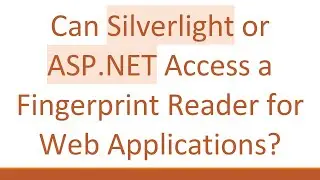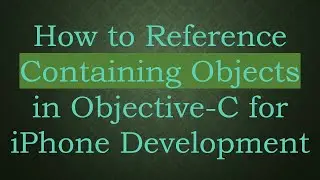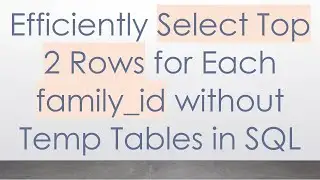How to Remove blob: Prefix from PDF URL in JavaScript Blob URL Creation?
Learn how to manage and work with JavaScript Blob URLs to remove the 'blob:' prefix, particularly when handling PDFs in the browser.
---
Disclaimer/Disclosure - Portions of this content were created using Generative AI tools, which may result in inaccuracies or misleading information in the video. Please keep this in mind before making any decisions or taking any actions based on the content. If you have any concerns, don't hesitate to leave a comment. Thanks.
---
How to Remove blob: Prefix from PDF URL in JavaScript Blob URL Creation?
When working with PDFs in the browser using JavaScript, you may encounter Blob URLs. These URLs help to create references to binary data stored in Blob (Binary Large Object) format. However, these URLs typically come with a blob: prefix which may need to be adjusted or removed for specific use cases.
JavaScript's URL.createObjectURL(blob) is a method that generates a URL to a Blob object, making it easy to manage files like PDFs. Here’s a quick guide on working with Blob URLs in JavaScript:
Understanding Blob URL Creation in JavaScript
A Blob URL is created using the following syntax:
[[See Video to Reveal this Text or Code Snippet]]
The resulting url is typically formatted as blob:<origin>/<uuid>, where <origin> is the source of the URL, and <uuid> is a unique identifier generated by the browser.
Addressing the blob: Prefix
A common concern is the appearance of the blob: prefix in the URL. Unfortunately, this is a mandatory part of the Blob URL specified by the browser API and cannot be removed directly. The blob: prefix indicates that the resource is a Blob object, not a traditional file accessible via the network.
Here is a more detailed look:
[[See Video to Reveal this Text or Code Snippet]]
Viewing PDF Without Blob Prefix
If the goal is to open this PDF in another viewer that does not support blob: URLs, the solution often involves downloading and saving the PDF, then referencing it directly.
Here’s an example of downloading the PDF for a direct reference:
[[See Video to Reveal this Text or Code Snippet]]
This process would download the PDF to the user's system, ensuring that no blob: prefix is present in the final file URL when opened.
Conclusion
Understanding how to handle Blob URLs effectively is key when dealing with binary data like PDF files in the browser. The blob: prefix is a necessary part of the specification and cannot be removed directly from the URL. Instead, ensure proper utilization of Blobs for tasks you need, such as creating downloadable links.
By managing these Blob URLs appropriately, you can efficiently handle documents like PDFs within your web application while providing a seamless user experience.































